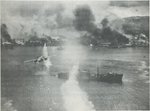carpenoctem1689
Airman 1st Class
- 285
- Sep 10, 2005
Ive heard many claims for this role, of the best anti-shipping aircraft to see service in all theaters. From the Ju-87, Sm.79, D3A, SBD, and TBM?TBF, among many others. I was just wondering what everyone thought about this, and what theyre favorite, out of all theaters and operators was.
Ive come to a stalemate on my own question to be honest. Ive heard of great claims by the D3A, especially against the british battleships that were sunk, the Prince of wales, and repulse i believe. I heard around 80% of bombs were delivered on target by D3A's, and even some sources saying no D3A's even took part. Ive heard also about the Stuka, Ju-87 being the best anti shipping platform, sinking many convoy and warships around malta, and everywhere north from there. I would, overall however, have to choose the SBD, in the PTO...How about you?
Ive come to a stalemate on my own question to be honest. Ive heard of great claims by the D3A, especially against the british battleships that were sunk, the Prince of wales, and repulse i believe. I heard around 80% of bombs were delivered on target by D3A's, and even some sources saying no D3A's even took part. Ive heard also about the Stuka, Ju-87 being the best anti shipping platform, sinking many convoy and warships around malta, and everywhere north from there. I would, overall however, have to choose the SBD, in the PTO...How about you?

